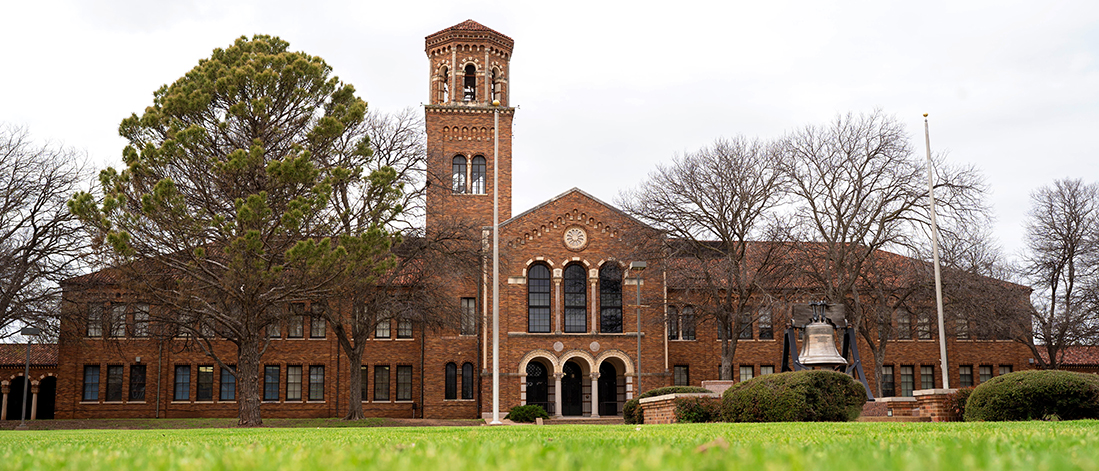MSU's Kimbell School of Geosciences receives grant for high school outreach
Through a nearly $400,000 grant from the National Science Foundation, Midwestern State University's Kimbell School of Geosciences will begin an outreach program to high school students that will prepare them for studies and careers in geoscience and environmental fields.
The Bridge and Earth Science Training (BEST) Program will recruit high school juniors and seniors to participate in a geoscience summer camp at the university, and then invite them to continue their studies at MSU as geoscience majors. The $398,866 grant includes a $2,000 research stipend for students in the camp who come to MSU and major in geosciences. A three-year project coordinator will be hired to assist with the daily operation and outreach.
"The BEST program is exciting for Wichita Falls and North Texas because it helps local and regional high schools and students become an active part of scientific research done at a university level," said Dr. Jesse Carlucci, associate professor in the Kimbell School of Geosciences. "We plan on running a camp where high school students can actually learn how to do research, interact with professionals in a variety of geoscience fields, and become active participants in science."
The summer camp is the main component of the BEST Program, one that Carlucci hopes will provide a bonding, catalytic experience for BEST scholars. High school juniors and seniors will learn how geoscientists apply scientific concepts to real-world problems during the weeklong experience. In addition to developing a cohesive student group, one of the main objectives of the camp will be to build relationships between the students and MSU geoscience faculty, local geoscience professionals, and current MSU students who will serve as camp counselors. The group will take field trips to active workplaces and laboratories that will reinforce this link and provide additional exposure to the role of geoscientists in the real world.
Students will participate in a research project on water quality and environmental issues in conjunction with the Red River Authority (RRA) and the Texas Stream Team (TST) on water quality monitoring programs using protocols established by the Texas Council on Environmental Quality. The students will learn to take measurements from industry professionals, and their data will contribute to an ongoing research collaboration between MSU, RRA, and TST. Students will investigate and test hypotheses related to factors such as variations in rainfall severity, extended dry or seasonal changes, and rates of change of key water parameters to overall water quality in the Red River Watershed. Through this collaboration, students' research will inform policy makers' decisions related to land use, water use, or permitting, which will affect residents in the Holliday Creek and Red River watersheds.
One of the most exciting parts of the program is that students will be paid as they learn research techniques. "Our goal is to allow students to feel like professional scientists much earlier in their academic careers," Carlucci said. "We are planning many outreach activities to promote the grant, and we want all the local schools to know that the geosciences are a great career option for their students. All of our planned programs involve actively doing science, rather than learning in a classroom."
Geoscience careers include water resource management, environmental assessment and consultation, petroleum production/exploration, and fundamental research - and the fields are expanding. The growing job market and a prediction from the Bureau of Labor Statistics that more than 143,000 geoscientists will retire in the next 10 years show an increase in demand for those in the field. Programs such as BEST will assure the demand for energy and hydrology professionals across the United States can be met.
Carlucci said that earth science courses are not required for graduation in Texas, which could cause many high school students, along with their parents, teachers, and guidance counselors, to be less knowledgeable about the variety of geoscience careers. BEST can act as a bridge between North Texas high schools and MSU, to educate students, teachers, counselors, and parents about the geosciences as well the opportunities for careers.
The NSF is an independent federal agency created by Congress in 1950 to promote the progress of science. With an annual budget of $7.5 billion, the NSF is the funding source for approximately 24 percent of all federally supported basic research conducted by America's colleges and universities. NSF is the major source of federal backing for many fields such as mathematics, computer science, and the social sciences.
Contact Carlucci at jesse.carlucci@msutexas.edu for more information.




